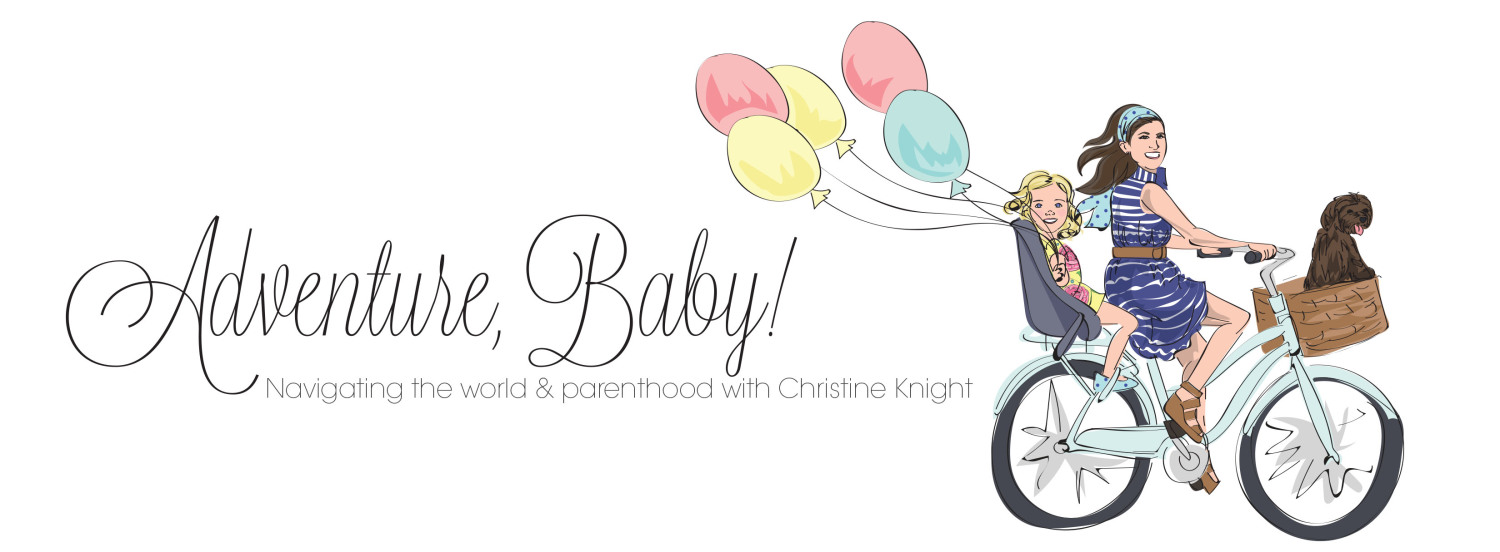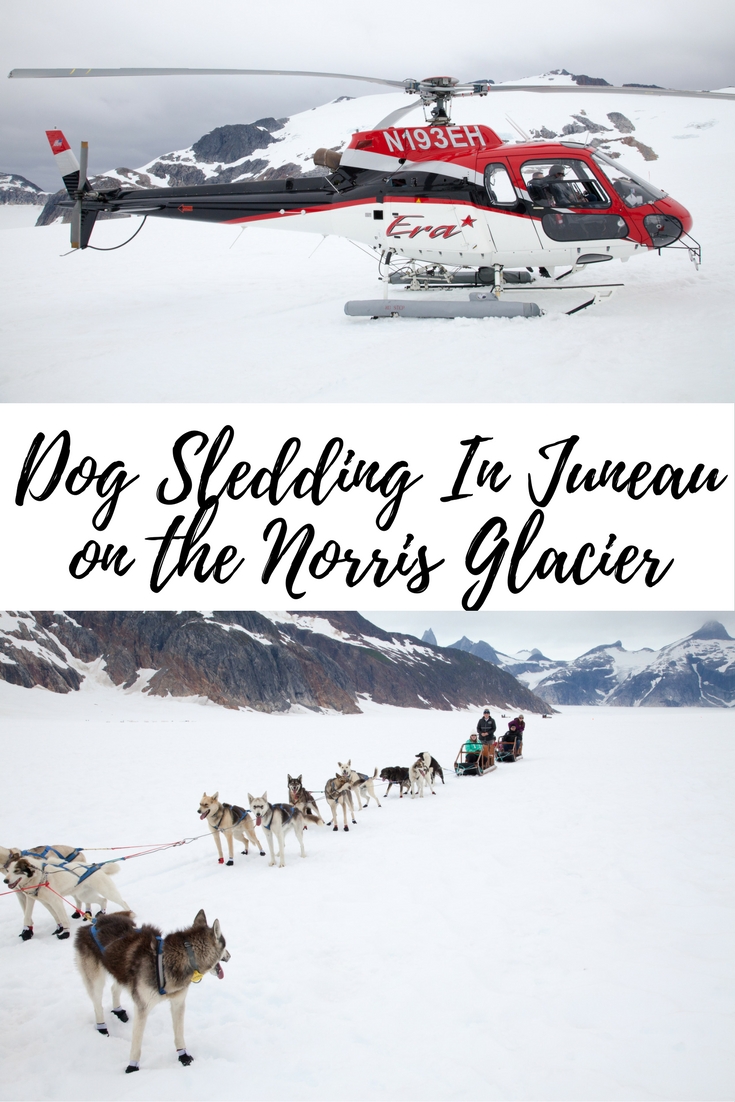
An icy breeze blows against our faces and the high pitched sounds of excited dogs yipping fills the air. We’re racing at high speed through a snowy winter wonderland, pulled by a team of 12 strong, extremely enthusiastic dogs who live to race. High up on a glacier in remote Alaska, this remarkable experience is one of those once-in-a-lifetime moments that we can’t believe is actually happening.
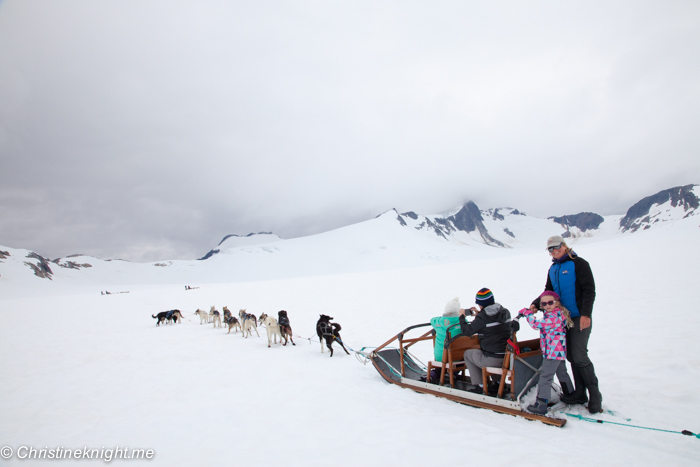
On this special day, we’re dog sledding with the mushers and sled dogs of the Iditarod, an annual race that sees teams of people and canines pitch themselves against each other in a race across an arctic landscape. It’s a battle of endurance, speed and survival.
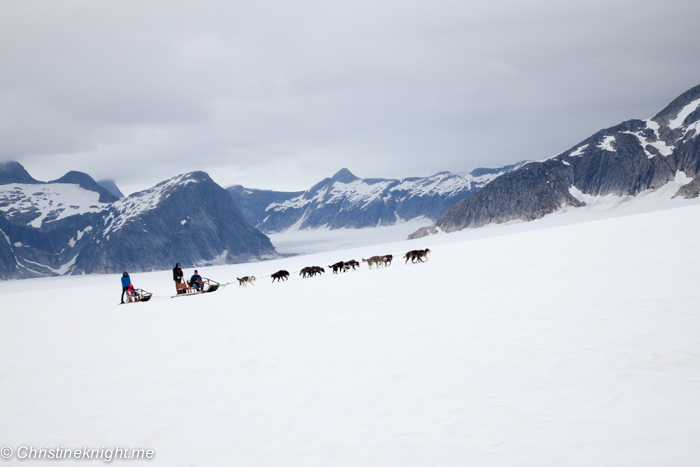
High up on the Norris Glacier we visit their training camp. It’s a chance to not only see natural beauty that is so spectacular that it makes your heart ache, but also an opportunity to get a glimpse at the unique way of life for the people who dedicate their entire lives to their dogs.
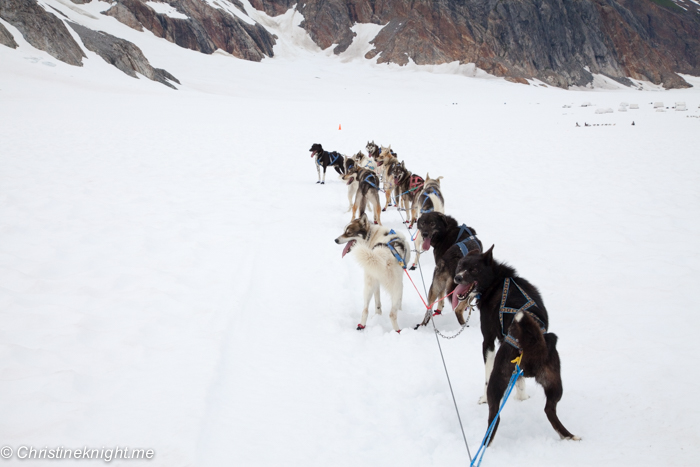
The opportunity for this incredible experience comes while we are in Juneau, Alaska. We get picked up by staff from Era Helicopters at the dock where our ship, the Disney Wonder, had parked early that morning. A quick bus ride to the heliport and we are given a life vest, a weigh-in and watch a safety video. No bags, water bottles etc are allowed on the helicopter and must be placed in a locker before boarding. My daughter and I wear waterproof boots, but snow booties are supplied for those wearing sneakers.
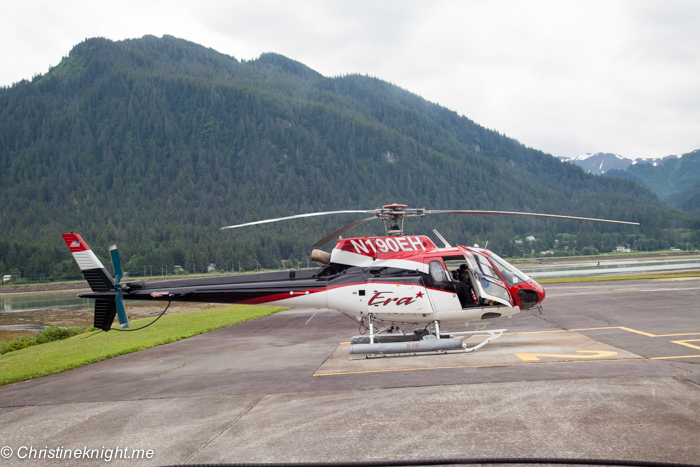
Each group and their seating assignment is decided on weight to ensure an even distribution in the helicopter. In ours, my husband and our daughter, Cheese, sit up front and I get placed in the rear next to a window.
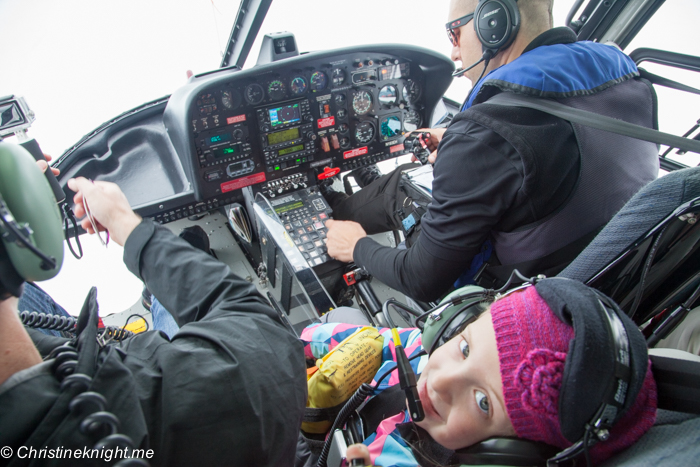
It’s Cheese’s first helicopter flight and we aren’t sure how she will go. It’s an exhilarating (and potentially terrifying) experience for adults, so for a five-year-old, we have no idea what to expect. She’s really quiet when we board and while we are taking off, but, once we are in the air and she discovers the “talk” button, it’s game on and we have a running commentary of every amazing detail she spots out the window: mountains, glaciers and tiny buildings nestled into the ice.
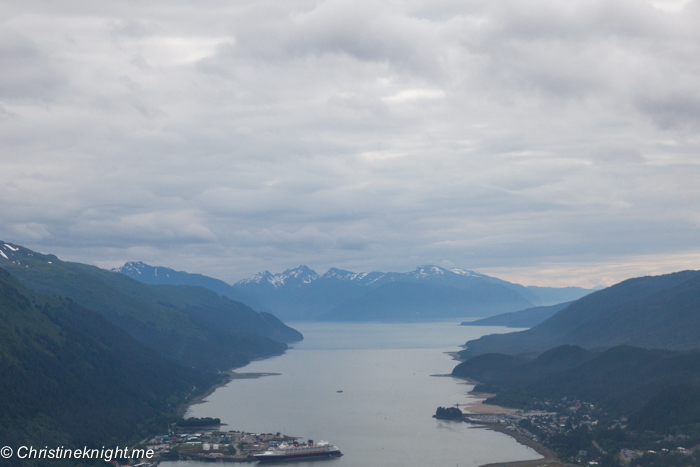
The flight from Juneau to the Norris Glacier lasts about 20 minutes. We get a bird’s-eye view of the glaciers and can see the vibrant blue of newly-calved ice. Our pilot, Ryan, talks us through the glaciers and points out which had receded and which advanced back to the same level each year. Most are receding more and more each year. It’s a confronting look at the effects of global warming.

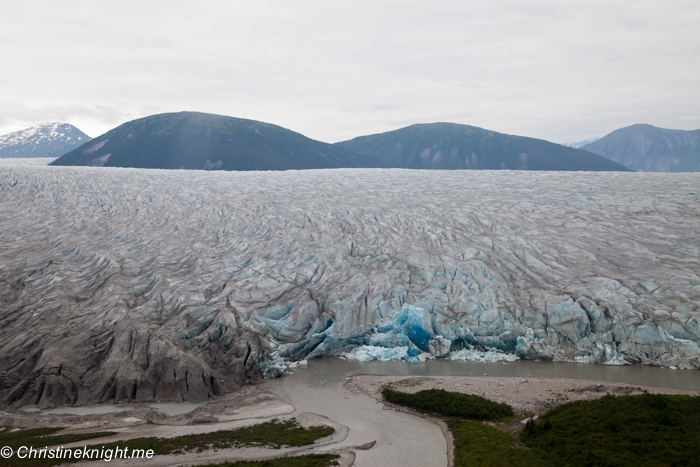
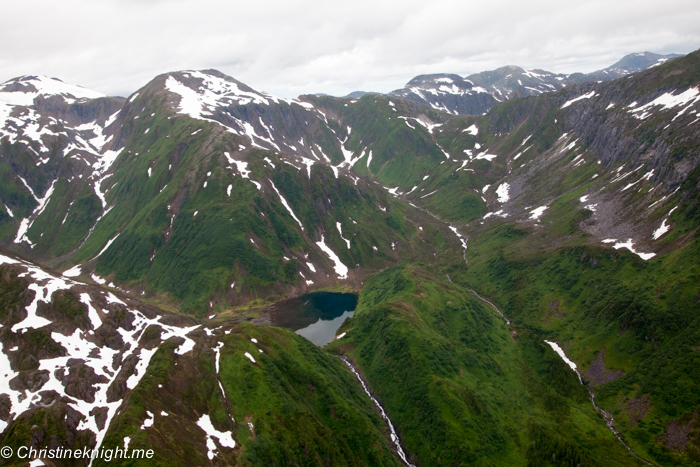
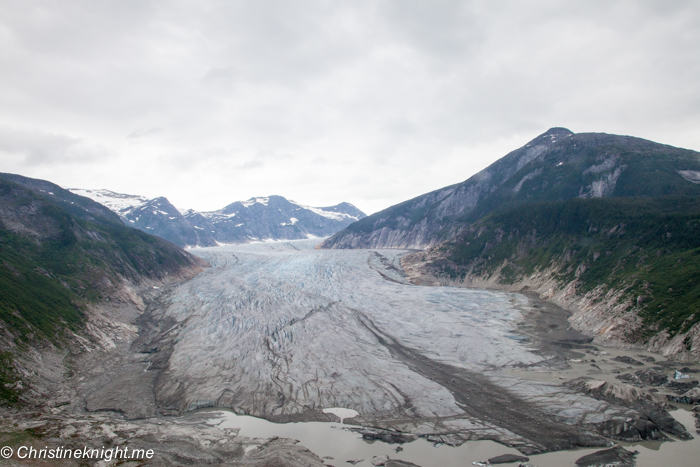
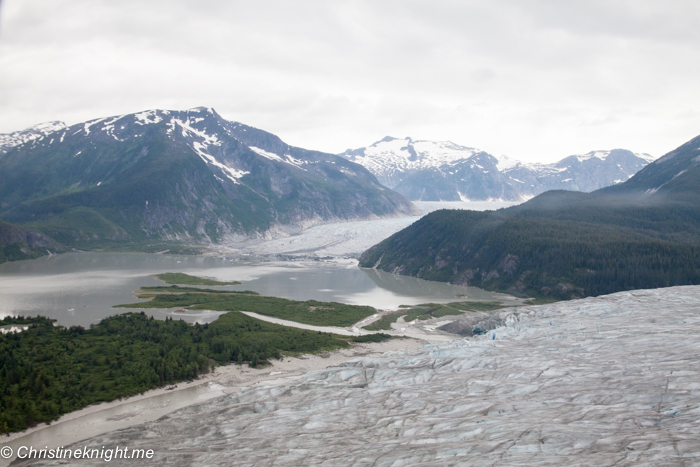
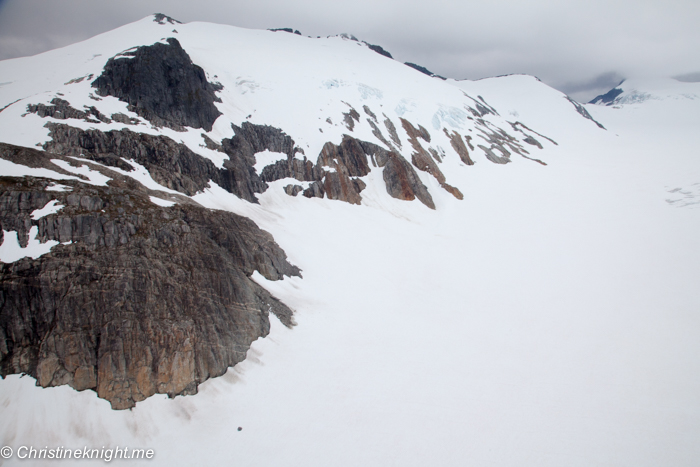
On the Norris Glacier we are met by the Alaska Heli Mush crew, who take us to meet the sled dogs, AKA the stars of the show. 20 people and almost 200 dogs live on top of this remote glacier during summer, with their entire lives devoted to training. As the only way to get to the glacier site is by helicopter, the entire camp must be flown up the same way that we did – via helicopter, with special dog boxes made to carry about 12 dogs per flight. In September the dogs and camp are all flown back off the glacier, with the camp being stored in a warehouse and the sled dogs continuing their training and racing in other homes.
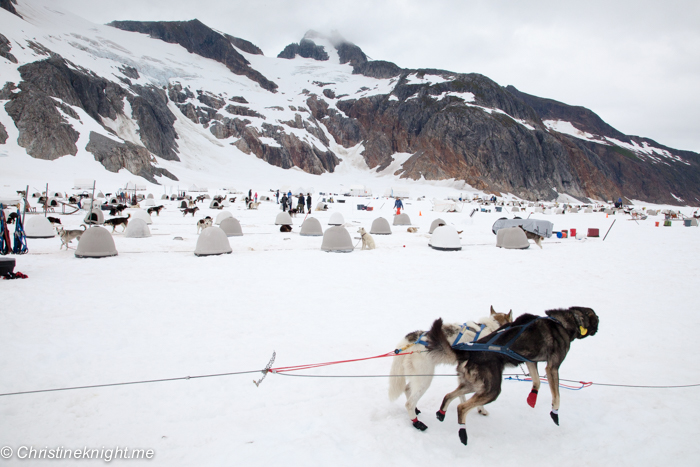
The dogs we have flown so far to meet are in training to run the annual Iditarod Trail Sled Dog Race, which is held every March in Alaska over a distance of 1,049 miles (1688 km). Mushers and a team of 16 dogs complete the race in 8–15 days, through the harshest of terrains – through forests, over hills and mountain passes, in the coldest conditions imaginable. The Iditarod race, which began in 1973, is highly competitive and a win is incredibly prestigious.

We learn that the sled dogs who run the Iditarod are “Alaskan huskies”, which is actually not a breed, but rather category of dog. An Alaskan Husky is generally a mix of many different breeds that each give the dogs various strengths, such as Siberian Huskies, Greyhounds and German Shorthaired Pointers. The dogs are selectively bred to create dogs that have the desired traits of speed, stamina, good feet, size, and coat type.

We are introduced to the dogs one at a time and learn their names, plus a bit about their personalities, then gave their coats a brush and assist giving the dogs a wellness check. They’re much friendlier than we had expected working dogs to be, and greet us with face licks if we’re not fast enough to get out of the way.
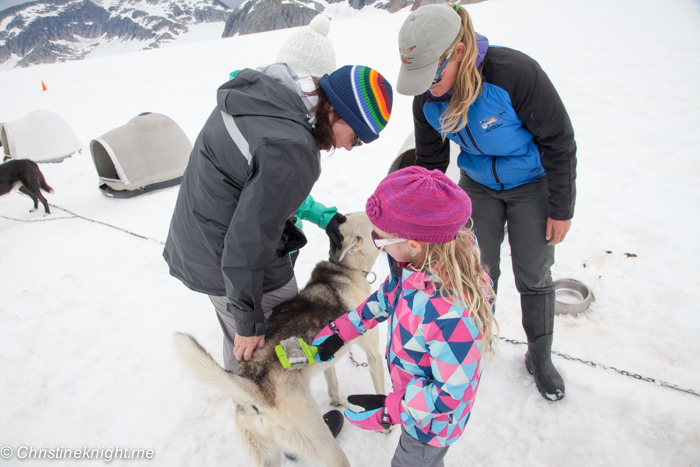
Next is strapping on their snow booties (only some of the dogs need them to protect their feet from the water, not the cold) and harness them up, ready for the ride. Our sled is led by two dogs both called “Otter”. One is bred for endurance and one for speed. As the racing dogs are around large groups of people and other animals when they race, it’s important for them to be well socialised, so the cuddle time we have with the dogs is beneficial to both dogs and visitors alike.

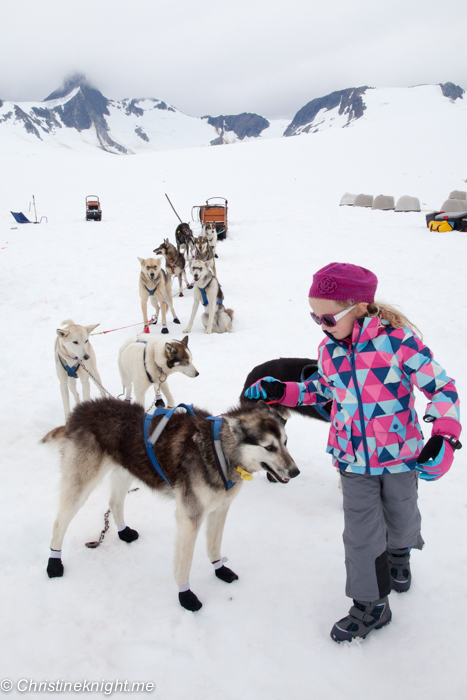
After a quick lesson in how to drive the sled, we jump on and are off, racing in the snow. The dogs know what’s coming and literally leap with excitement at the chance to run. It’s so hot for the dogs that they’ve been lying in the snow to cool off, while we’re so cold that we pull our beanies down over our ears and tuck chins into our fleeces.
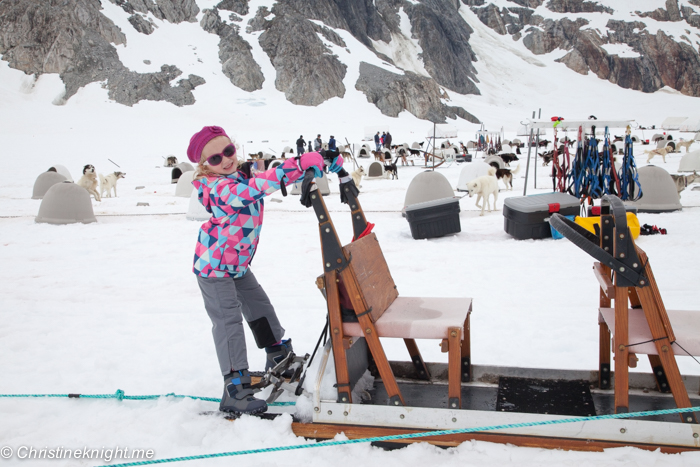
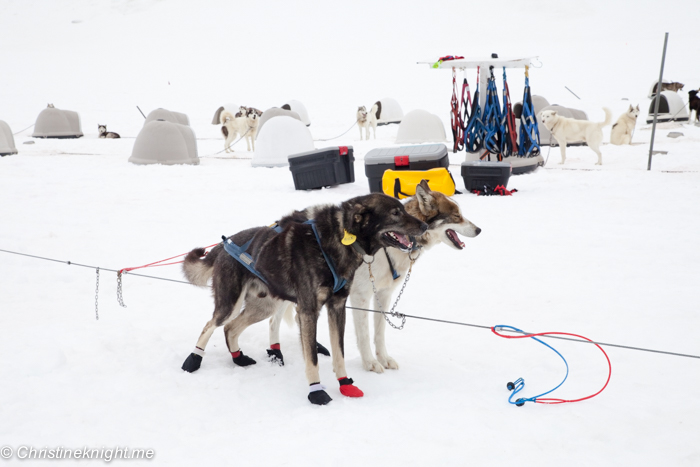
With the two Otters leading our team of dogs, we glide through the snow to the tune of our musher’s commands of “Hike!” “Gee!” and “Haw!”, and Cheese’s gleeful cry, “Mush, mush!”. We each take turns driving the sleds as we race through the snowy glacier top, with awe-inspiring scenery on every side. Snow-capped mountains reach high around us, as we glide through a winter wonderland that photographs can’t do justice.

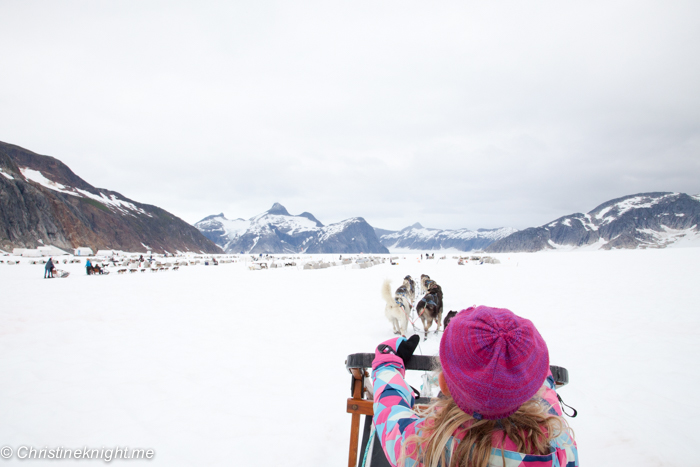
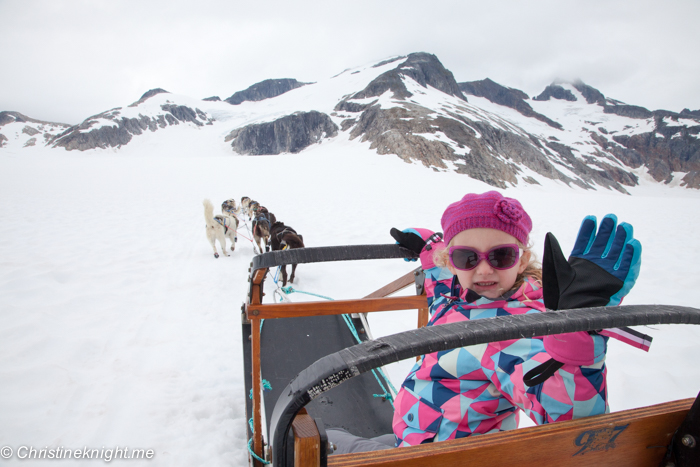
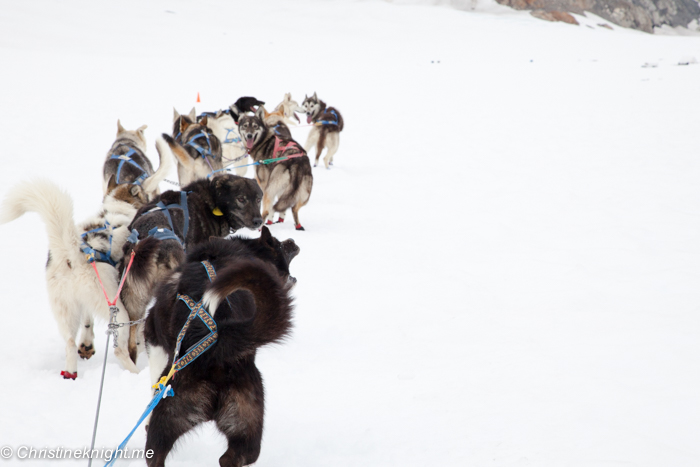
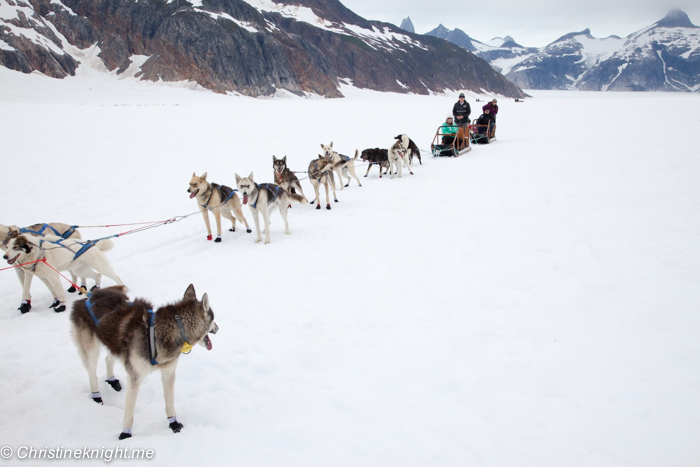
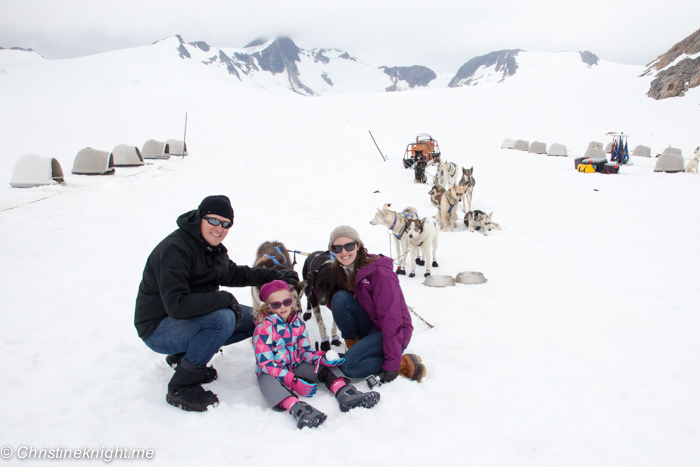
When our sled ride is complete, we feed the dogs a treat and thank them for the ride with hugs and pats. One of the Otters, we learn, is a particular softie who sleeps inside with the musher and does an incredible job as a heater. Running our hands through their thick, soft coats it’s easy to understand how these dogs thrive in cold climates.
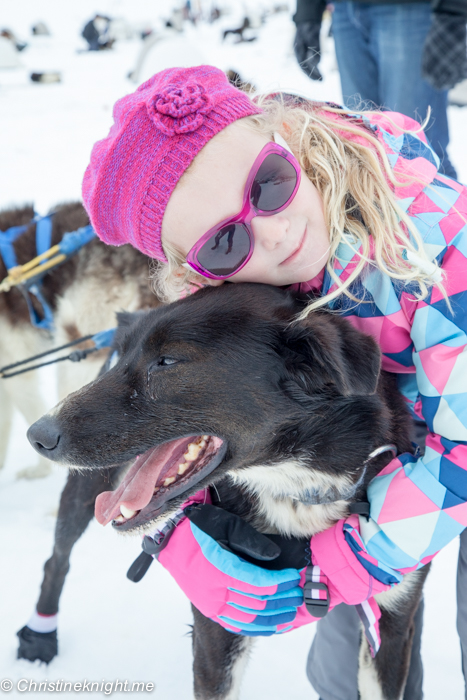
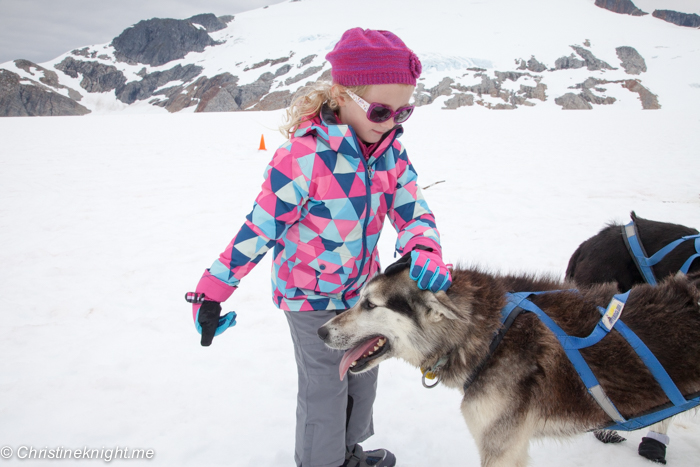
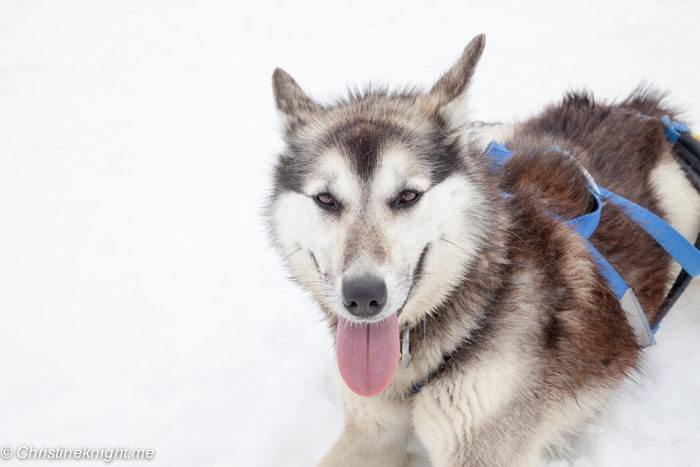
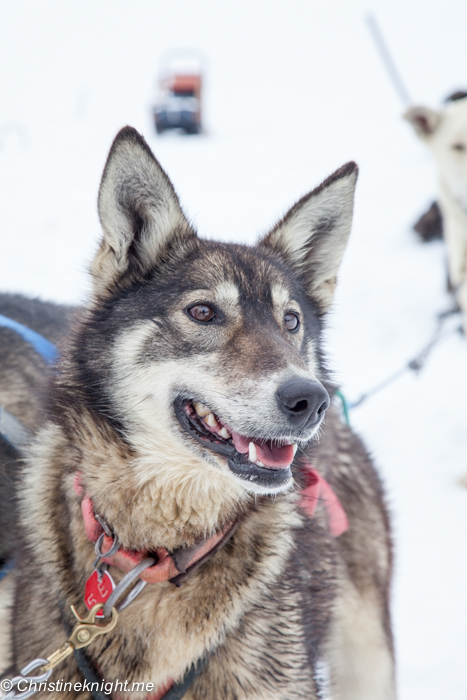
We say a sad goodbye to our new canine friends and are taken on a tour of the rest of the camp, which consists of 10 living tents, a cook tent, vet clinic and community tent. No Internet, cell phones, or TV – the crew live completely off the grid on their remote glacier with the absolute basics. The life of a musher is a simple one that is 100% about the dogs they care for.
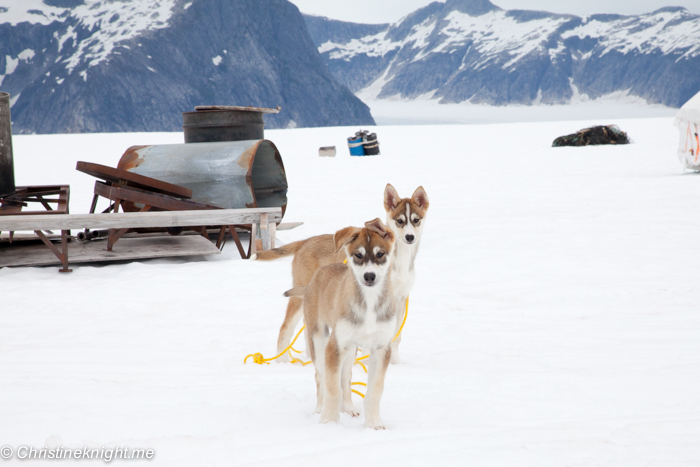
Our tour continues with puppies, who will in time be trained as sled dogs. They meet us with joyful licks and wiggling tails; 7-month-old babies who benefit from the socialisation visitors like us give them as much as it gives us joy to play with them.

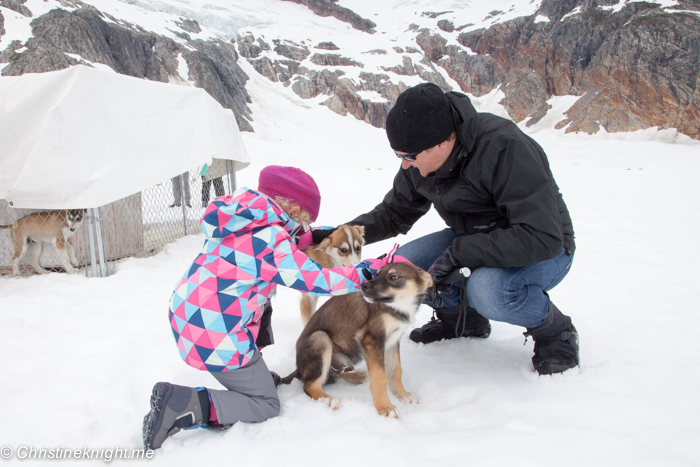
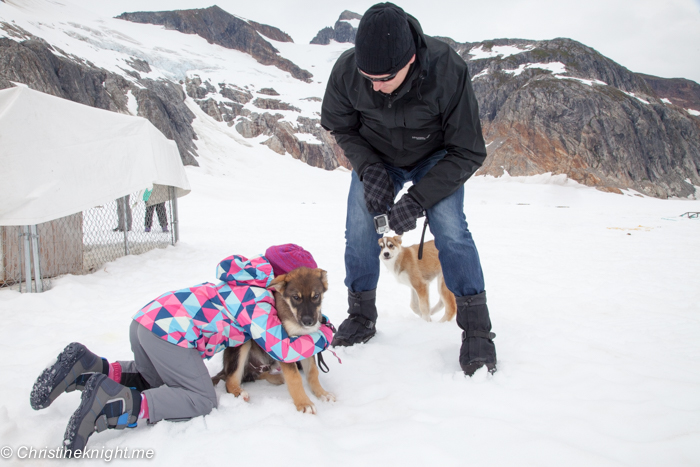
Cheese merrily chases the puppies and tumbles with them in the snow in a pile of canine and human limbs and icy snowflakes flying in the air. Her dislike for the snow pants we made her wear is forgotten as she lies on her back and makes snow angels, and throw giant snowballs at our heads.

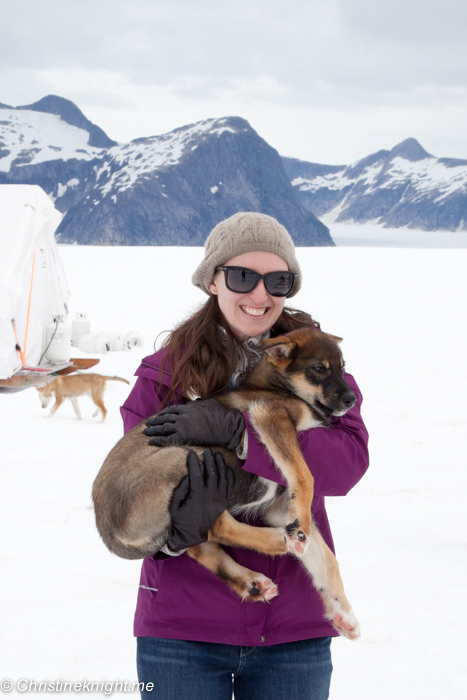
Just before the helicopters arrive to take us back to Juneau, we are served freshly baked cookies, snacks and hot drinks in a heated tent, which is exactly the thawing out we need after a few hours playing in the snow.
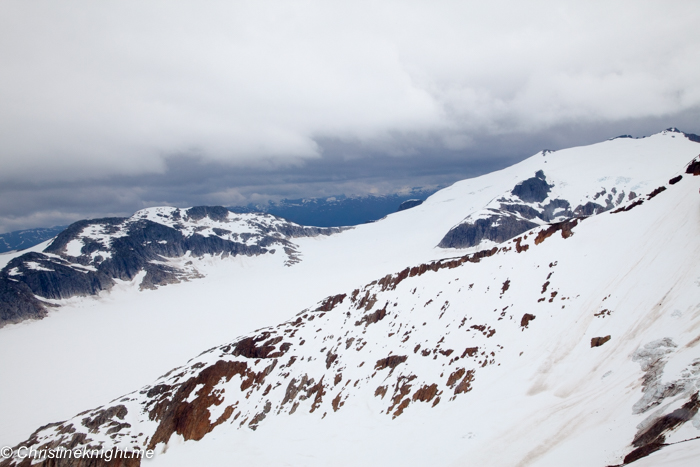

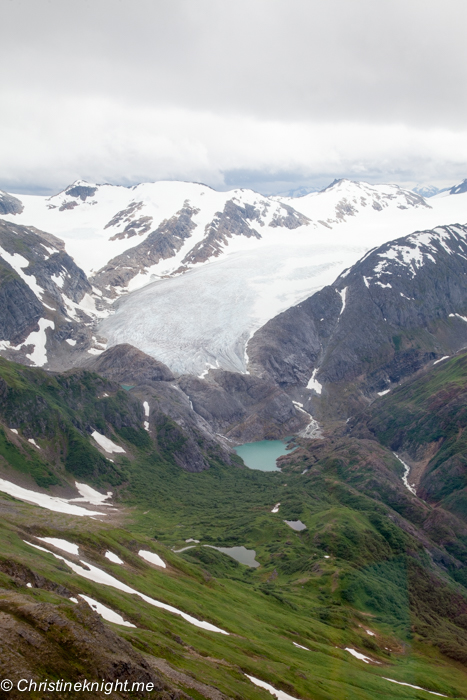
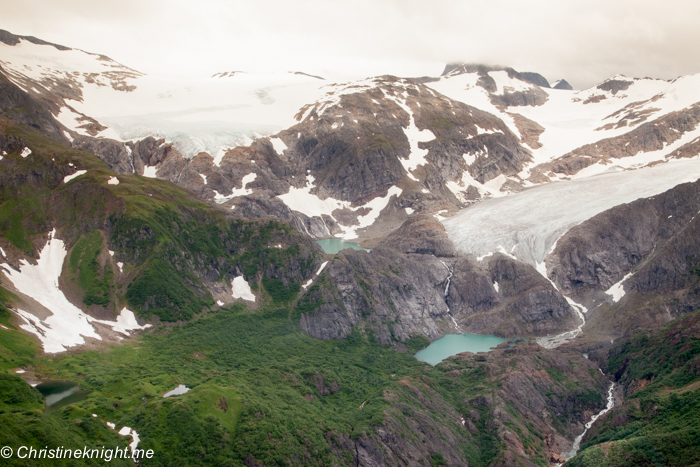
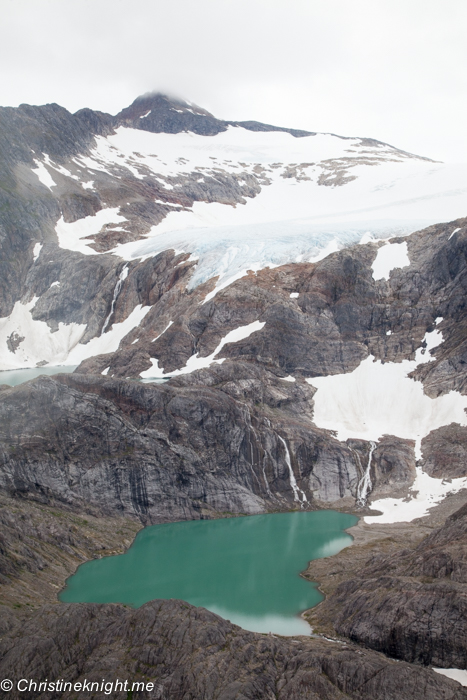
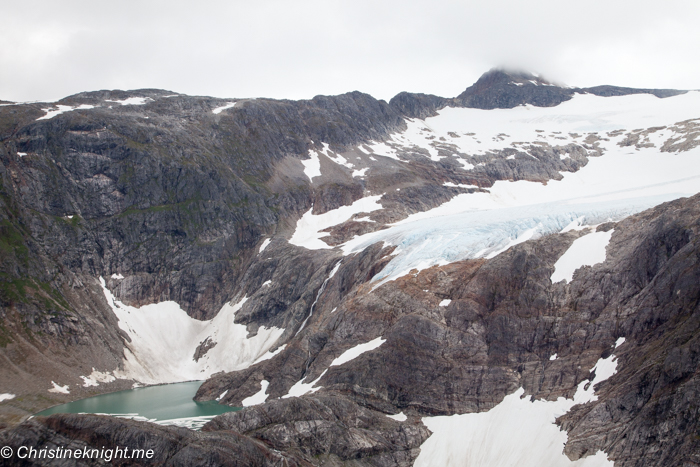
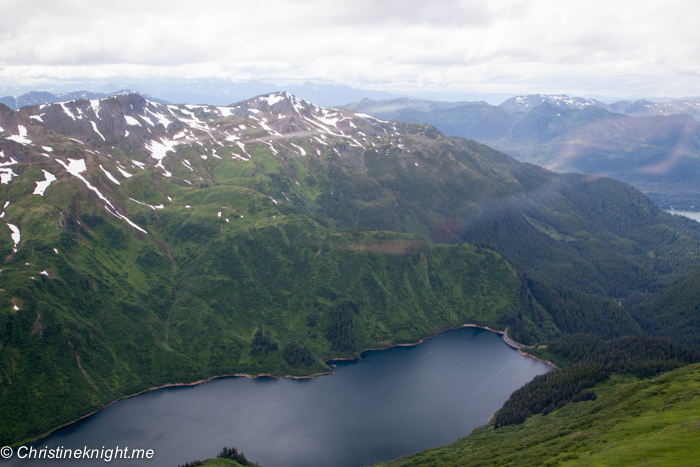
We arrive back in port after our return helicopter flight in awe of the experience we have just had. Have we really just flown to a glacier? Have we really just mushed dogs through the snow? When we say it out loud it sounds like a dream or a scene from a movie that doesn’t happen to regular people like us.
We flick through the photos and videos in disbelief that this magical day has been ours. It’s true, this memory is real and has left a snowy pawprint in our hearts that we will never forget.
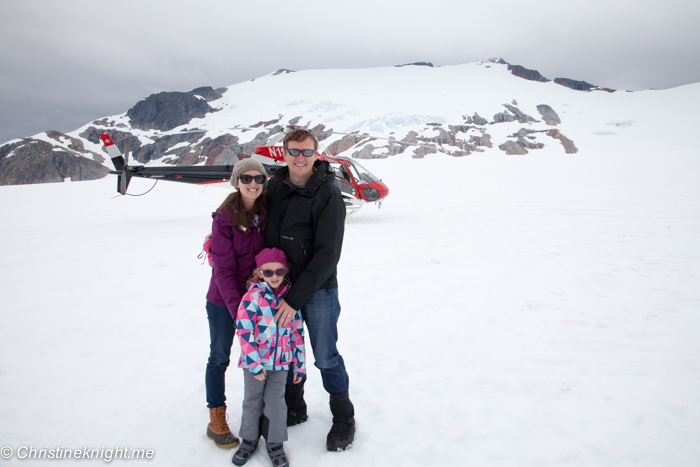
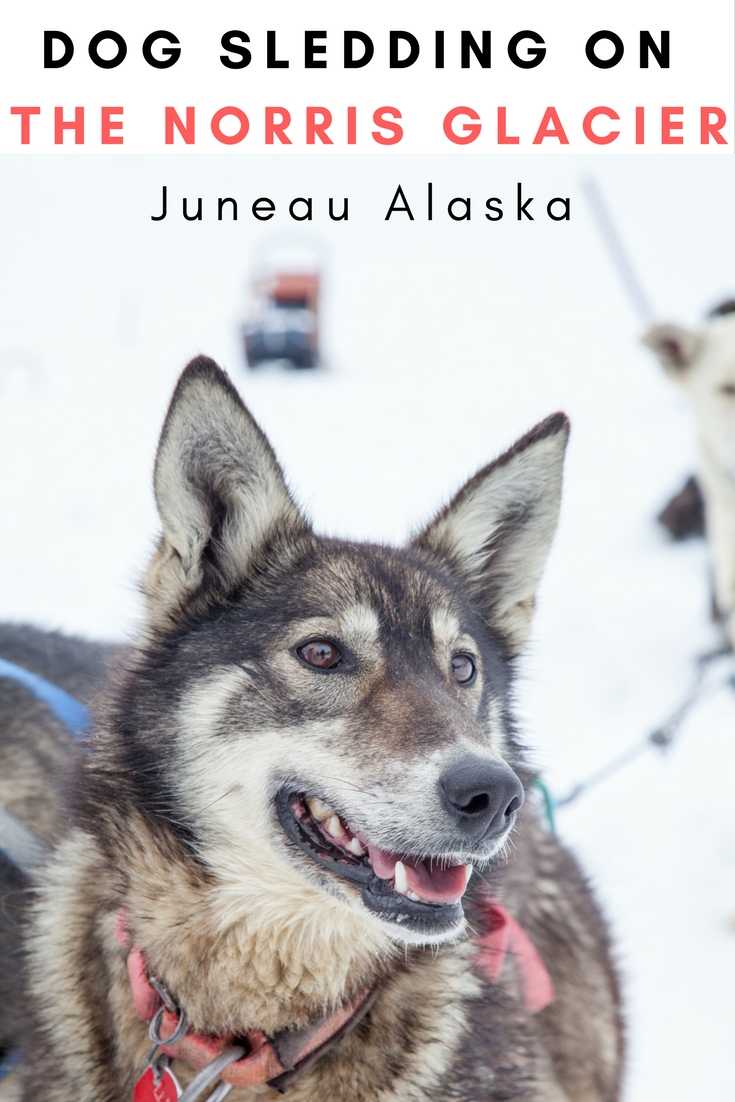
Our whole experience lasted rough 2.5 hours and was an “extended” experience. We booked through Disney Cruise Line but you can also book this experience directly through Alaska Heli Mush, in partnership with Era Helicopters.
